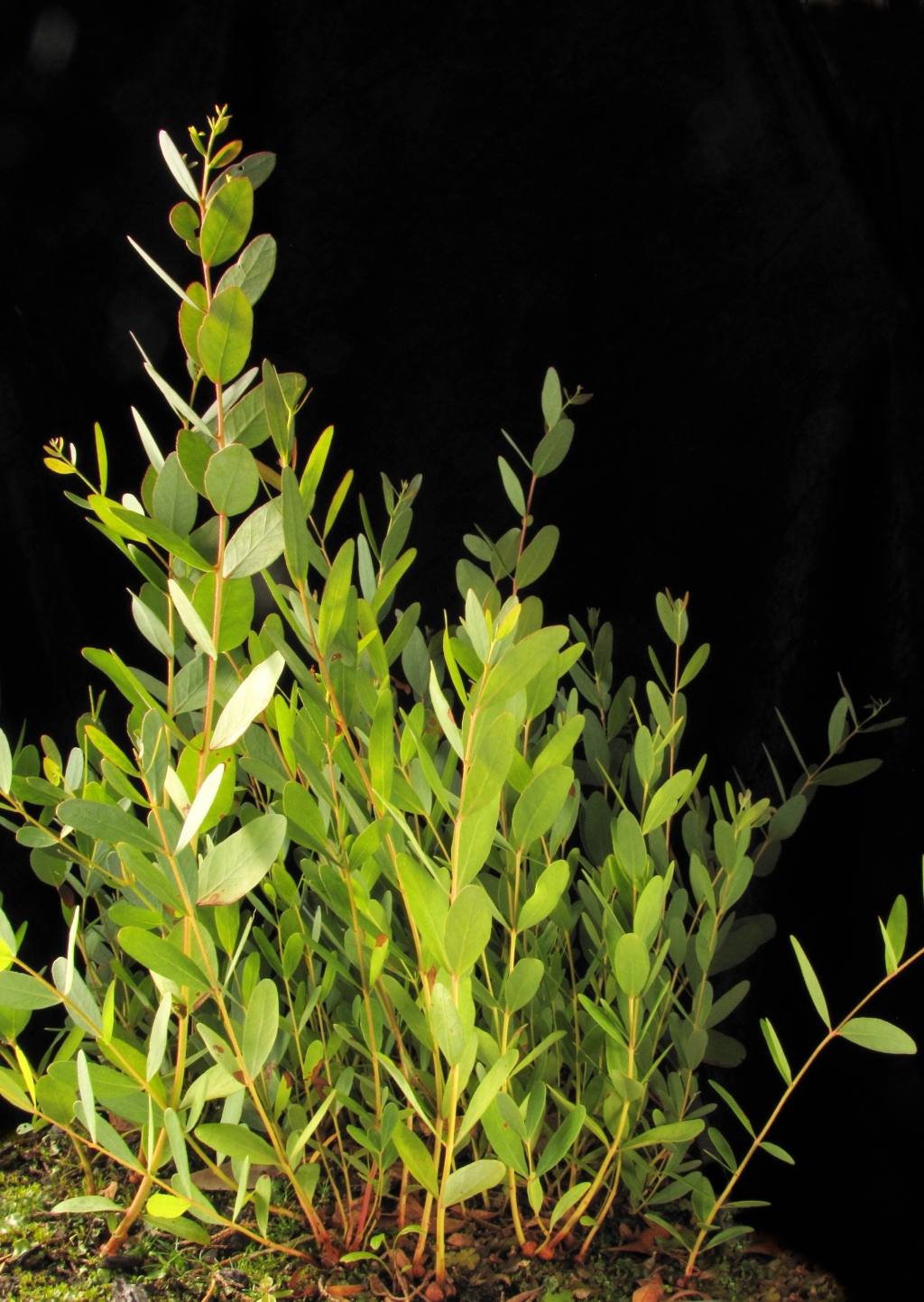Eucalyptus aromaphloia
L.D.Pryor & J.H.Willis Scent-barkTree to 18 m tall; bark rough to small branches, thick, furrowed longitudinally, dark grey; branchlets salmon-coloured. Juvenile leaves sub-sessile, opposite for several nodes, base of leaves tapering to the short petiole, oblong to elliptic, to 7.5 cm long, 1.6 cm wide, grey-green with new shoots glaucous, margins crenulate; adult leaves petiolate, alternate, lanceolate, 7.5–15 cm long, 1–2 cm wide, concolorous, dull to glossy, green to bluish-green; reticulation dense, with numerous, yellow and green, mostly island oil glands. Inflorescences axillary, unbranched; peduncles to 0.6 cm long, 7-flowered; buds pedicellate, ovoid or fusiform, to 0.7 cm long, 0.3 cm diam., scar present; operculum conical; stamens inflexed; anthers dorsifixed, cuneate; ovules in 4 vertical rows; flowers white. Fruit pedicellate, hemispherical, to 0.7 cm long, 0.6 cm diam.; disc slightly ascending; valves 3 or 4, slightly exserted; seed dark brown, flattened-ellipsoid, shallowly reticulate, lacunose, hilum ventral. Flowers Jan.–Mar.
LoM, Wim, VVP, GipP, OtP, WaP, Gold, CVU, GGr, DunT, HSF, OtR, VAlp. Occurs from the Fryers Range near Malmsbury west to the Mt William Range in the Grampians and south-west to Ballarat and Brisbane Range, with an outlier near Anglesea.
The occurrence of Eucalyptus aromaphloia in South Australia, as suggested in the protologue, has not been confirmed. It may be confused with E. viminalis subsp. cygnetensis which is distinguished by green juvenile leaves which are opposite for many pairs and have truncate to amplexicaul bases, and by fruit that are globular (including the disc). The presence of oil glands in the bark is not confined to E. aromaphloia. No exceptional smell can be detected in the bark, and the common name ‘scent bark’ is misleading.
A distinct form of E. aromaphloia occurs on Mt William and the southern Edge of the Major Mitchell Plateau. It differs from the typical form by its shorter stocking of rough bark which only extends to mid-stem, and generally larger fruits.
Brooker, M.I.H.; Slee, A.V. (1996). Eucalyptus. In: Walsh, N.G.; Entwisle, T.J., Flora of Victoria Vol. 3, Dicotyledons Winteraceae to Myrtaceae, pp. 946–1009. Inkata Press, Melbourne.
 Spinning
Spinning
